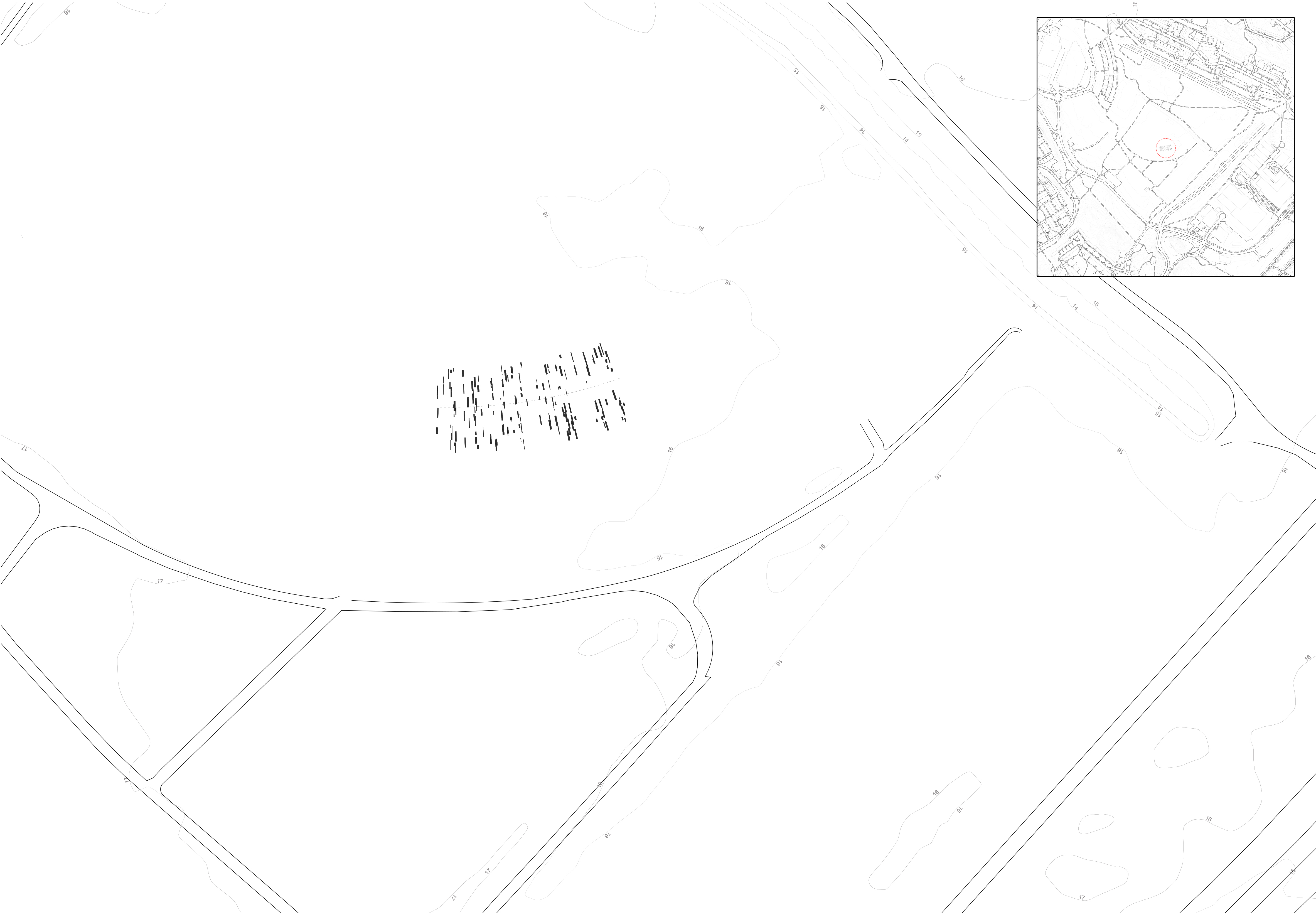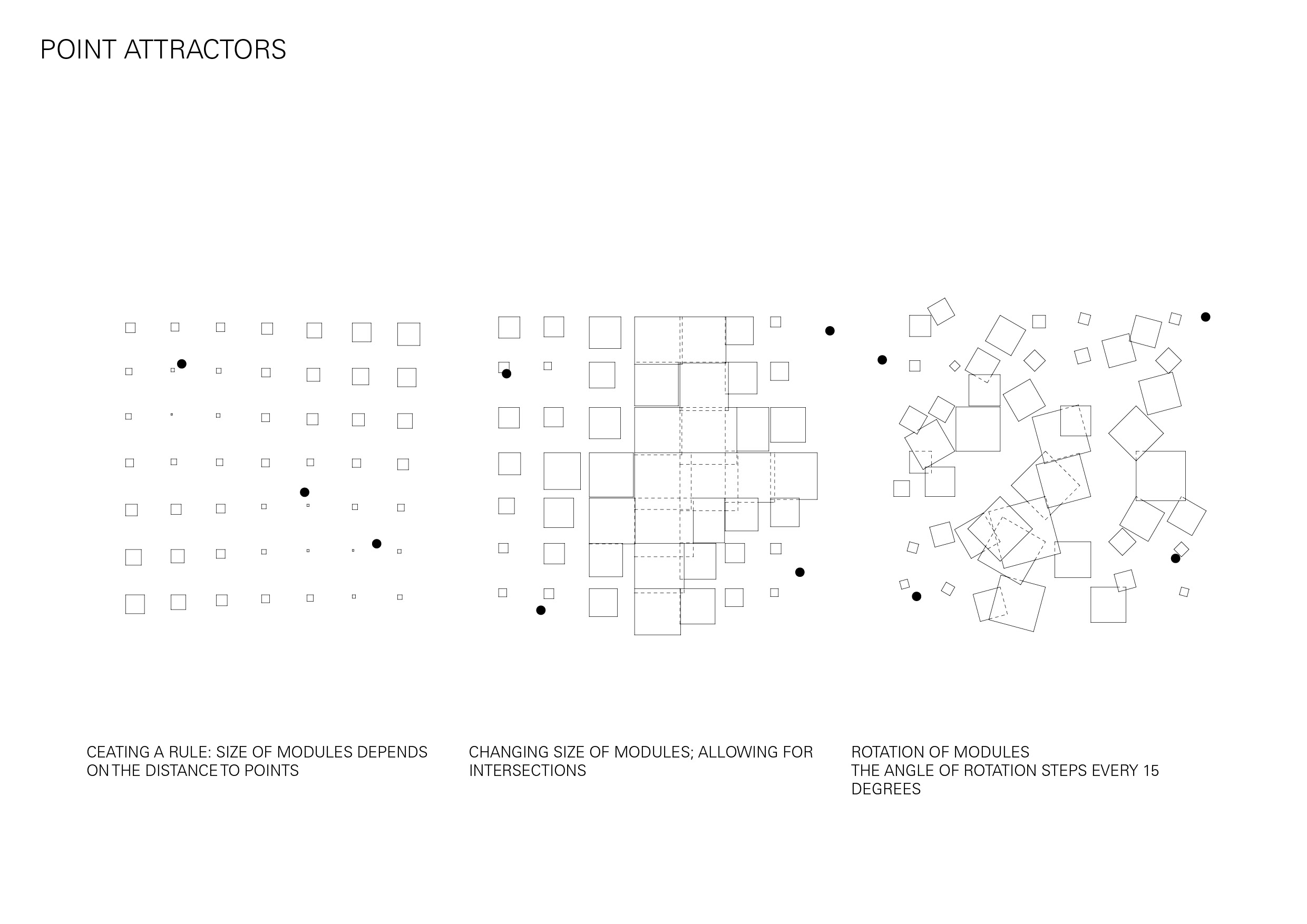
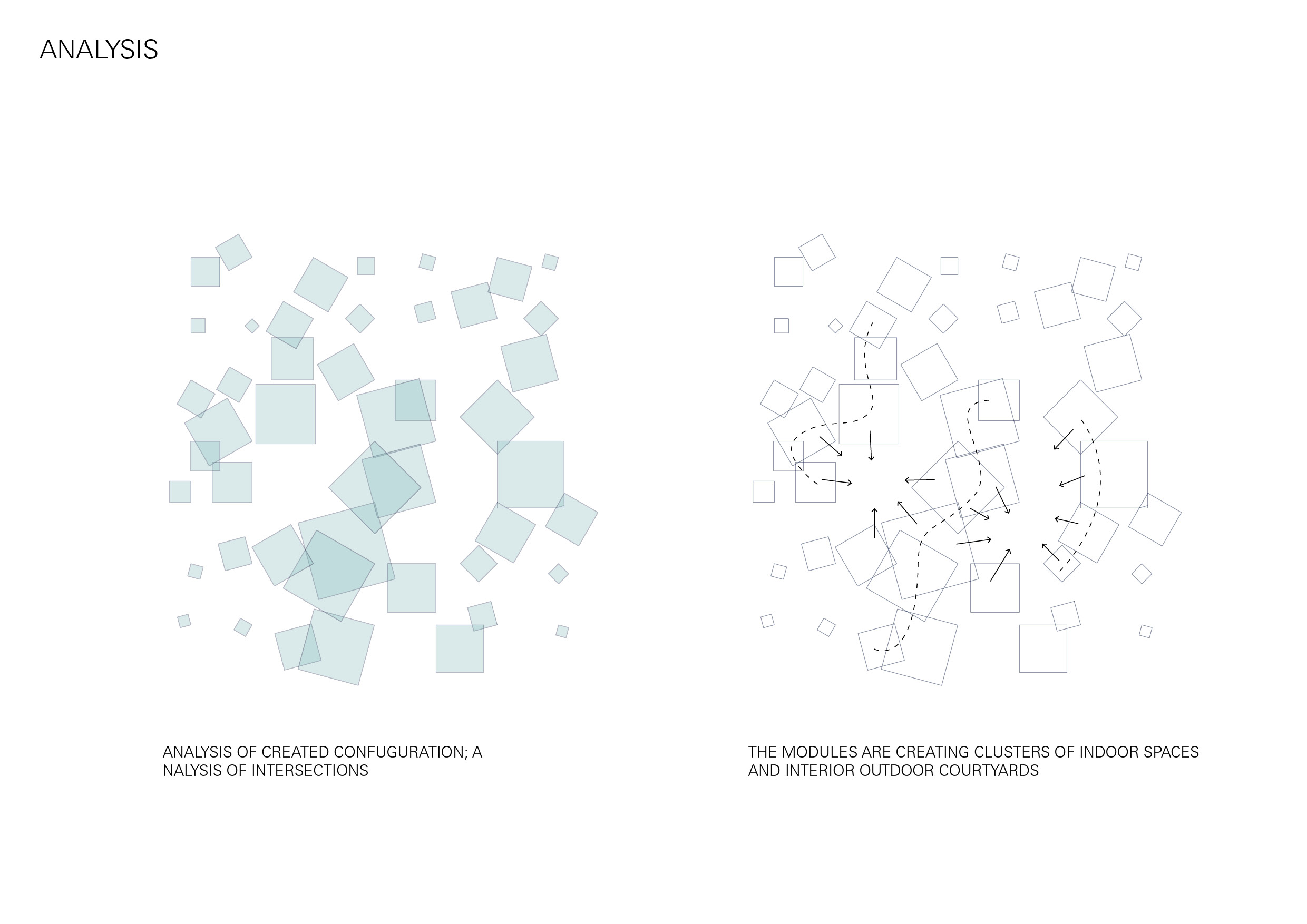
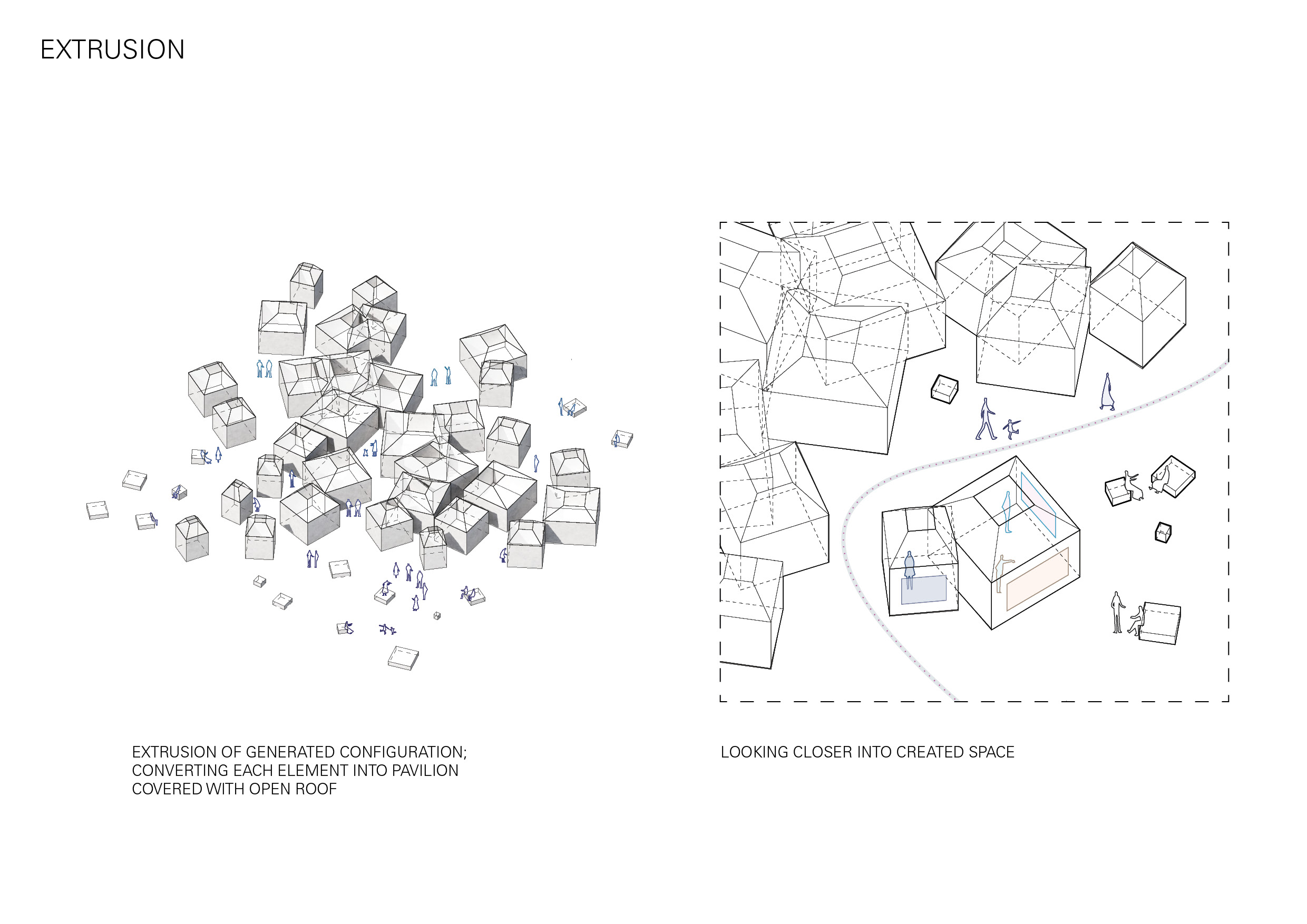

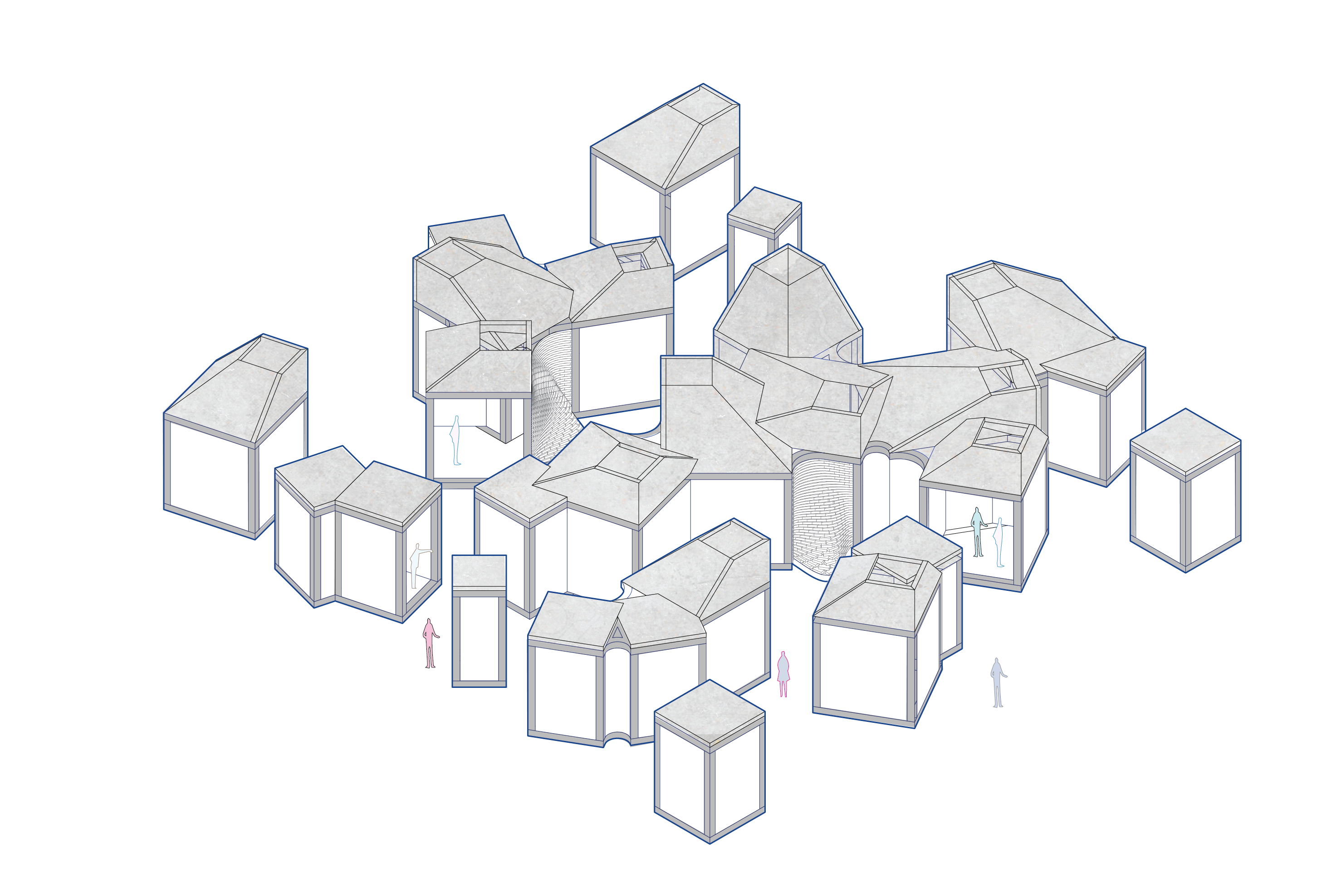


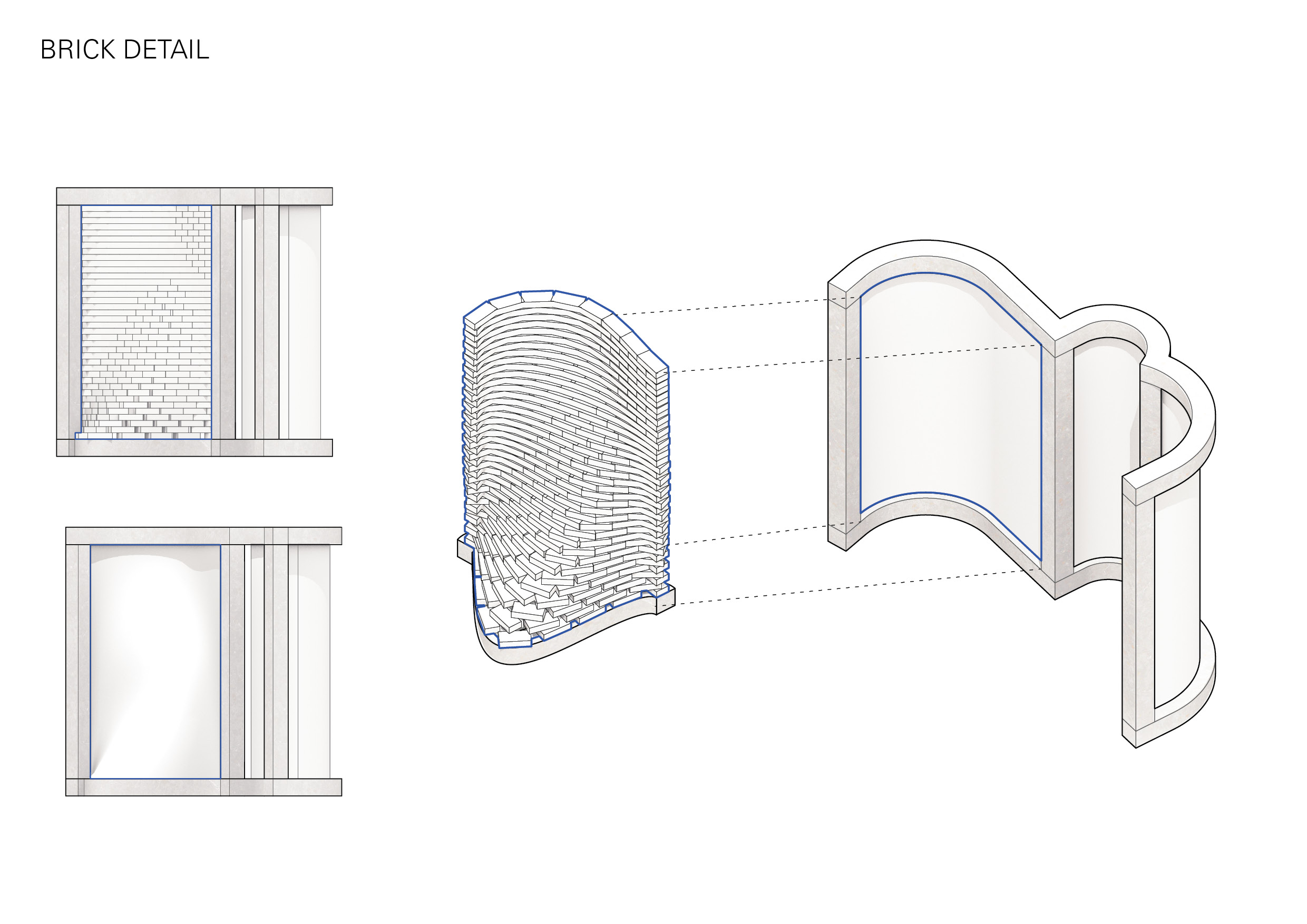
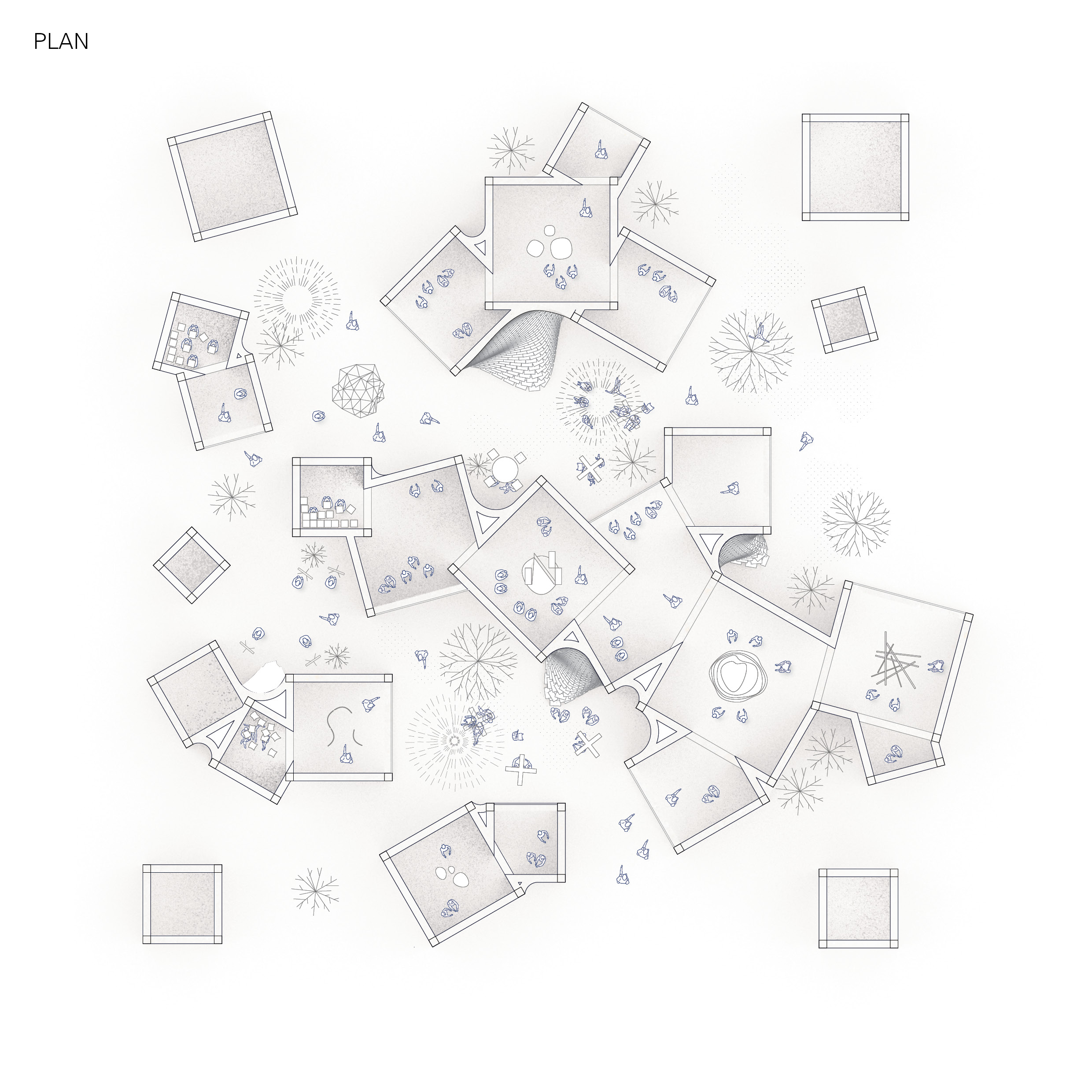
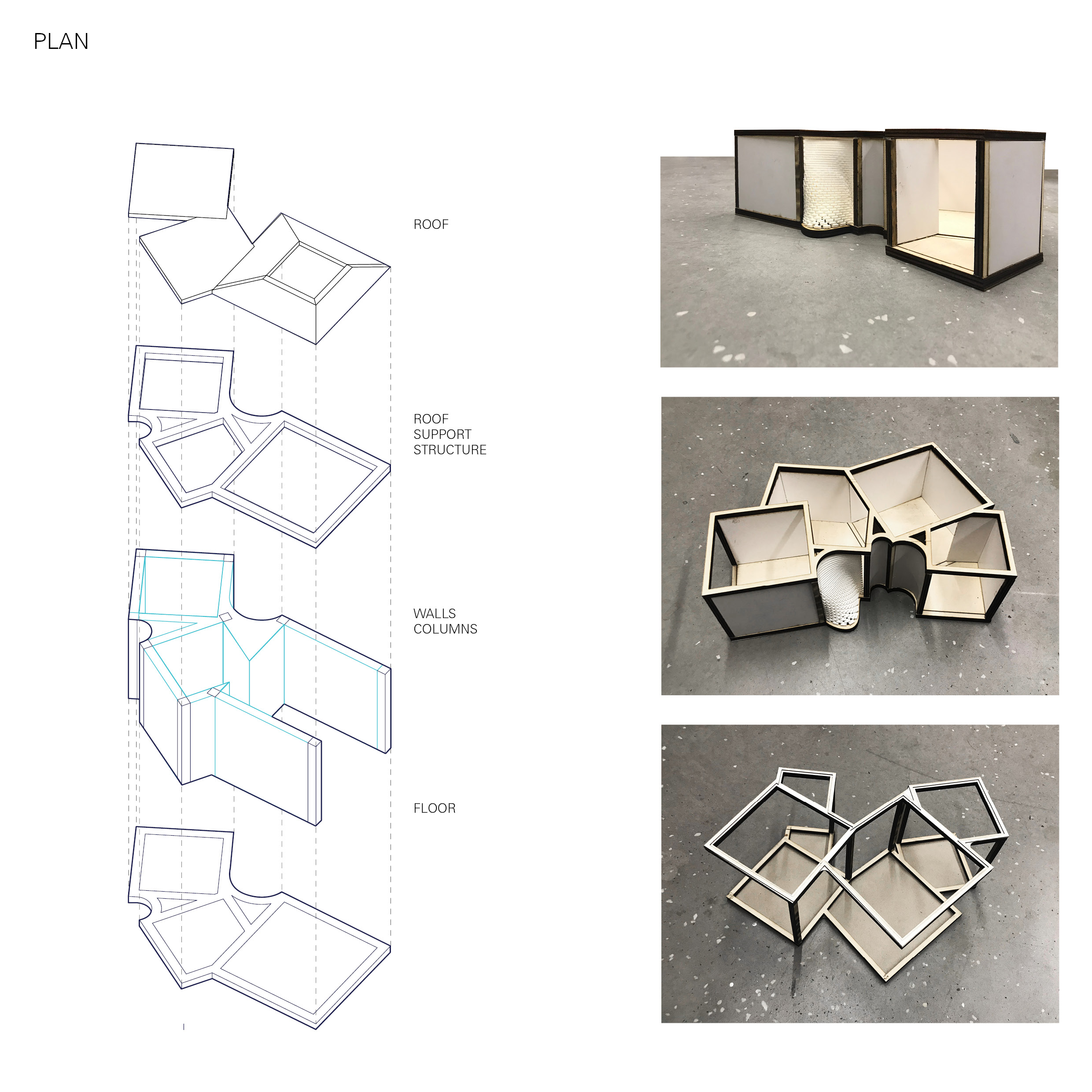

Studio 9: Architectural Notations
KTH Royal Institute of Technology Architecture School











Drawing from the research and testing throughout project_01 and _02, I began to compile and implement the system I created in order to give architectural form to the space filling curve that is the dragon curve. The path and control points of the test M1 from project one inform the grid along which both the walls and roof structure are set, thereby enforcing a direct correlation between section and plan. Altering parameters such as thickness, scale and spacing of the walls and roof, with respect to desired lighting, movement, material etc. can easily be navigated as the structure and form are resolved thanks to the connection in plan and section
.
The final presentation for project_01 brought about the exploration of light and materiality through the medium of models. Working through sketches, I began exploring the roof grid and it’s correlation to the curved plan with an experimental approach to how their relationship is articulated in the physical form.
I worked through three card models using the laser cutter to achieve the curvatures of the dragon code, investigating the materiality of the curves, the spacing and placement of the roof.
The flow of movement through the building was a direct response to the location on site. Using the pond as a feature and arrival point, the Konsthall starts as a bench into a curved wall that sinks down into the ground and leads you back up into the waterfront.
 The challenge of using the curved walls as a guide without the roof structure deterring from the spatial experience was a balance difficult to navigate. The design needs to be explored at multiple locations within the curvature, based on site variations and the specific spatial qualities created at each chosen point. How the spaces are occupied, what potential it holds for exhibition purposes etc.
The challenge of using the curved walls as a guide without the roof structure deterring from the spatial experience was a balance difficult to navigate. The design needs to be explored at multiple locations within the curvature, based on site variations and the specific spatial qualities created at each chosen point. How the spaces are occupied, what potential it holds for exhibition purposes etc.

Delving further into the world of the dragon curve, I think I should start by sharing the principal behind the code.
The dragon curve is a space filling curve that never crosses itself. It is based on a principal of folding a piece of paper and repeating the folds in the same direction. When you unfold the paper with the angles at 90 degrees, the dragon curve can be formed. The folds can be repeated an infinite number of times, with the curve arcing at a 45 degree angle. Here, I will refer to each repetition as iterations.
I varied the code and set up a table to document the results, ultimately choosing three codes to further in my design for a Konsthall.
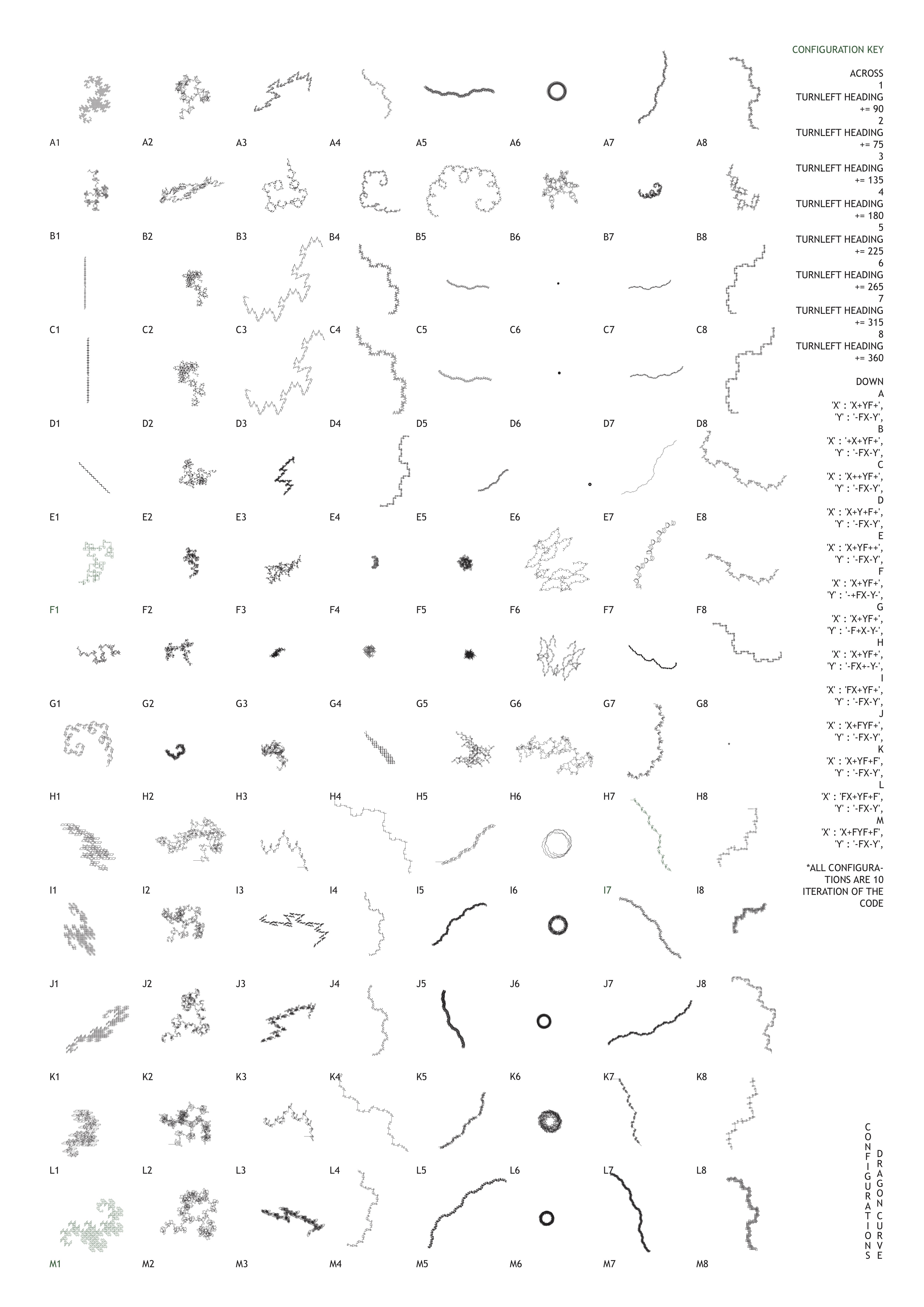
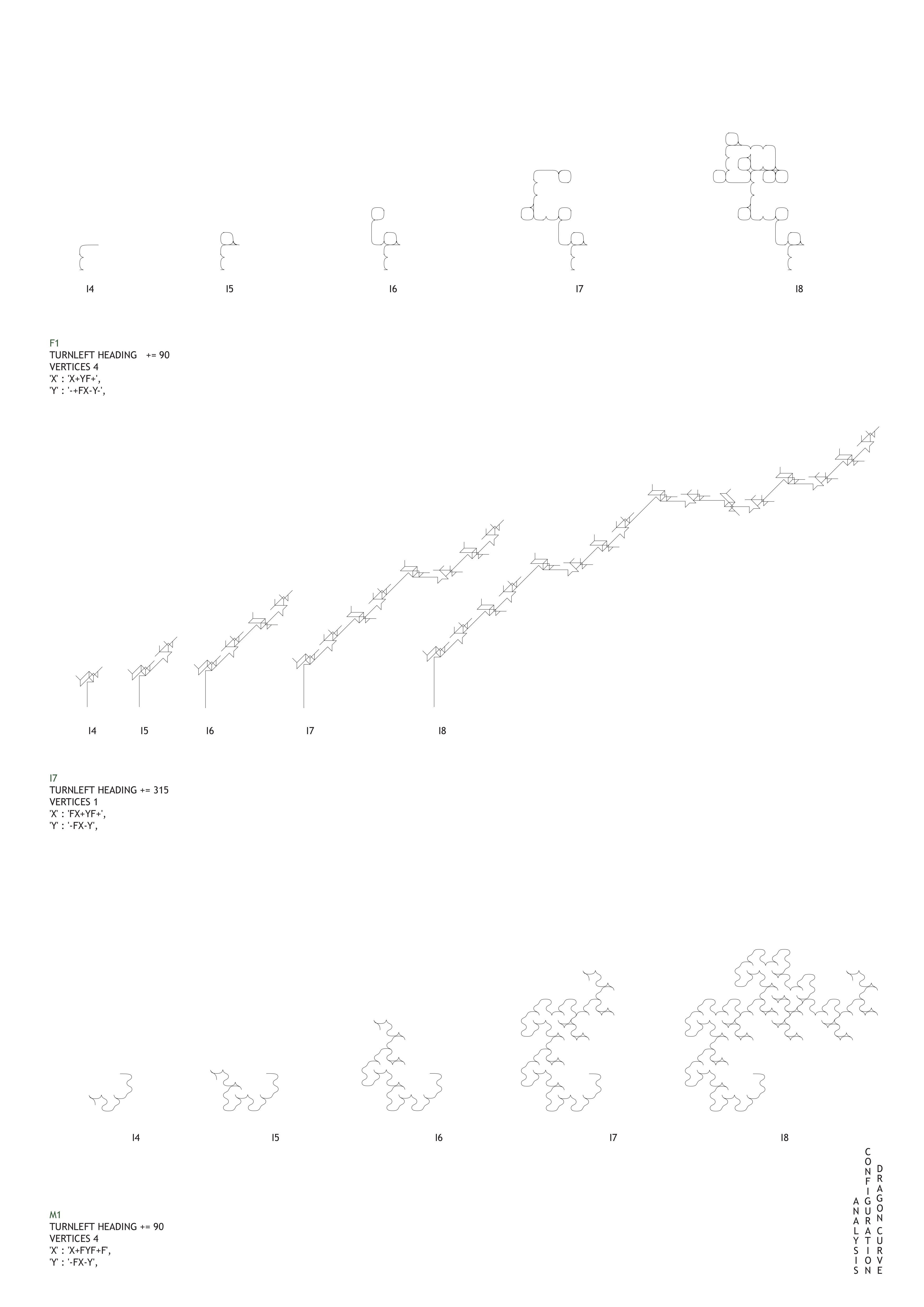
In order to progress with the design, I chose the code variation M1 to explore spatially. I used the geometries of the curve to create forms at three different scales as an exploration from street to seat; the impact on the streetscape, the scale of the pillar and it’s possibilities as seating. I wanted to allow the dragon curve to be the prominent expression in the design so I allowed all the internal spaces to flow along the curvatures created, sinking into the ground and back up as a sectional flow through the space. The roof structure is set at 45 degrees in a rigid, linear grid format to contrast and strengthen the curves in the Konsthall. The next step would be to bring the dragon curve into the built environment through models.
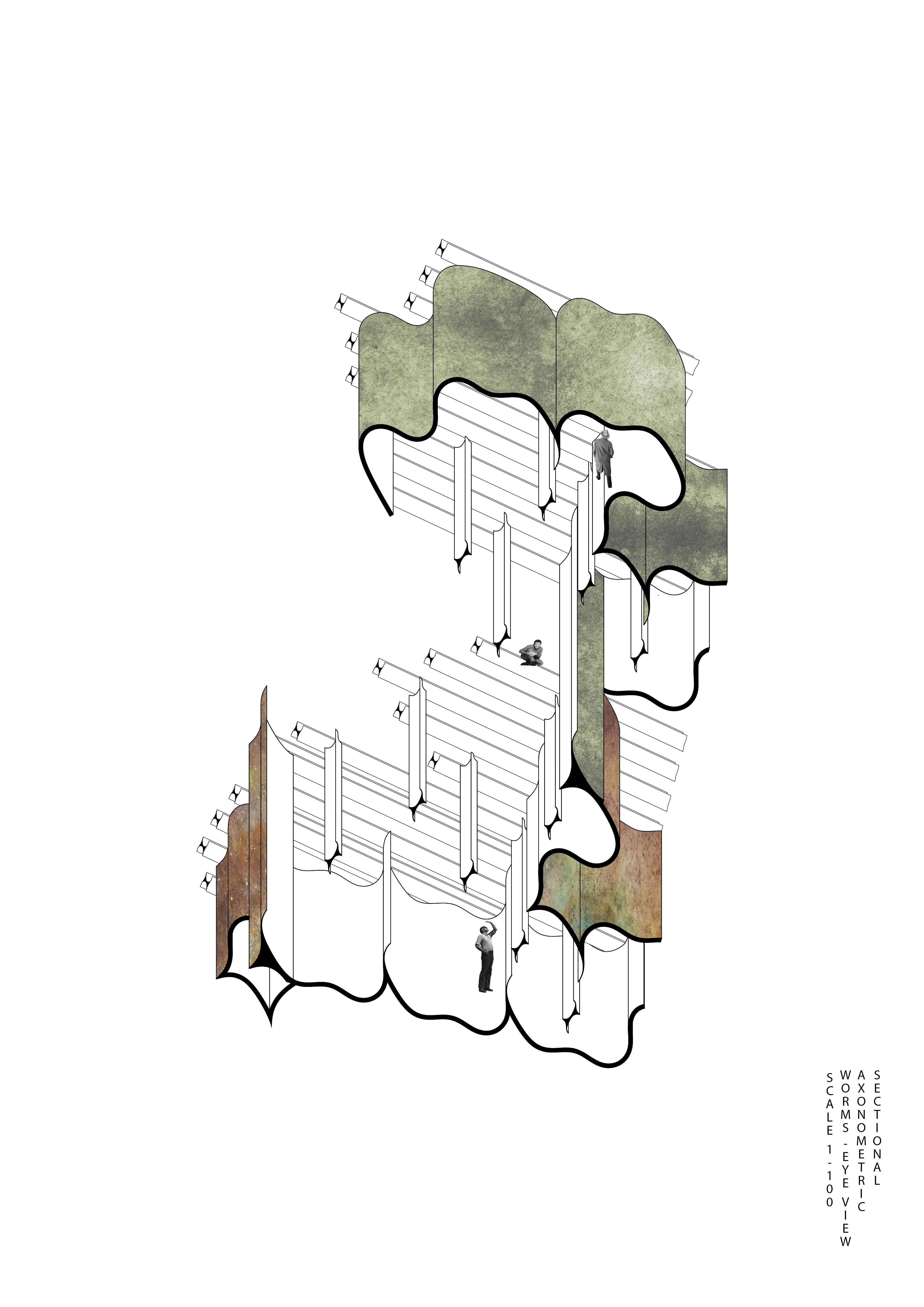
During my precedent study of spatial configurations, I was particularly interested in how circulation defined the form and organisation of a building and how the building could be treated as a continuous space.
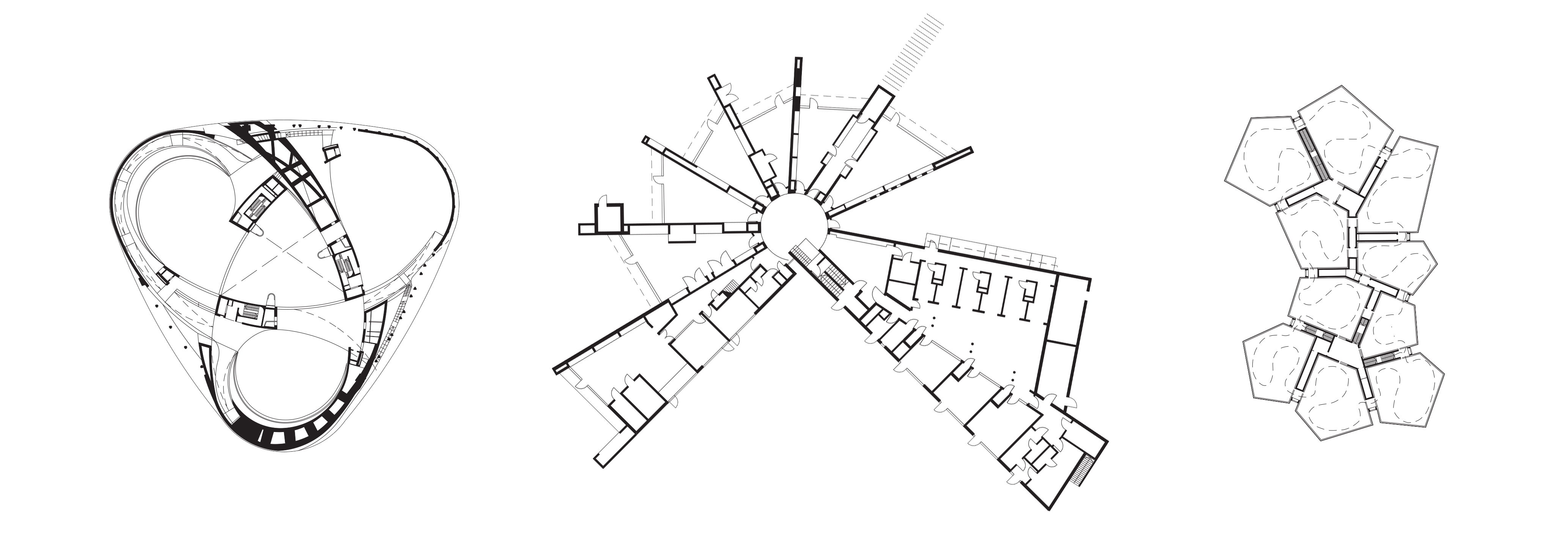
I became particularly interested in the second precedent study and how the continuous space of a building can be subdivided into a sequence of spaces. The subdivision creates different relationships between one another, but also a different relationship between each interior to the exterior of the building. I began by exploring how tangents could be generated along a curve in varying ways to define spaces in between them which either enclose or open.
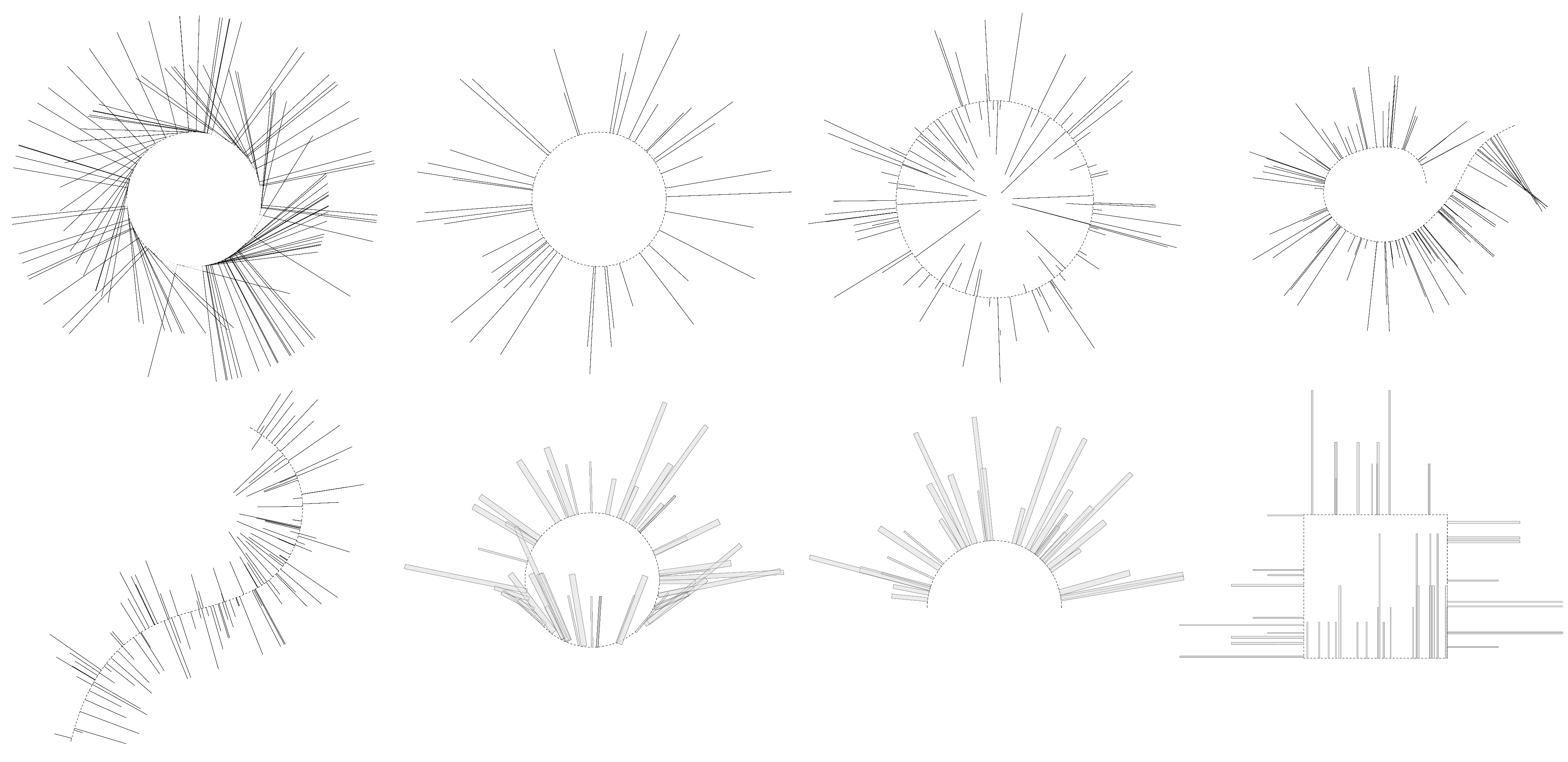
I then started to evolve these 2D configurations into 3D, by randomly extruding different thicknesses of walls to different heights. To create circulation openings between spaces, or recesses within the walls.
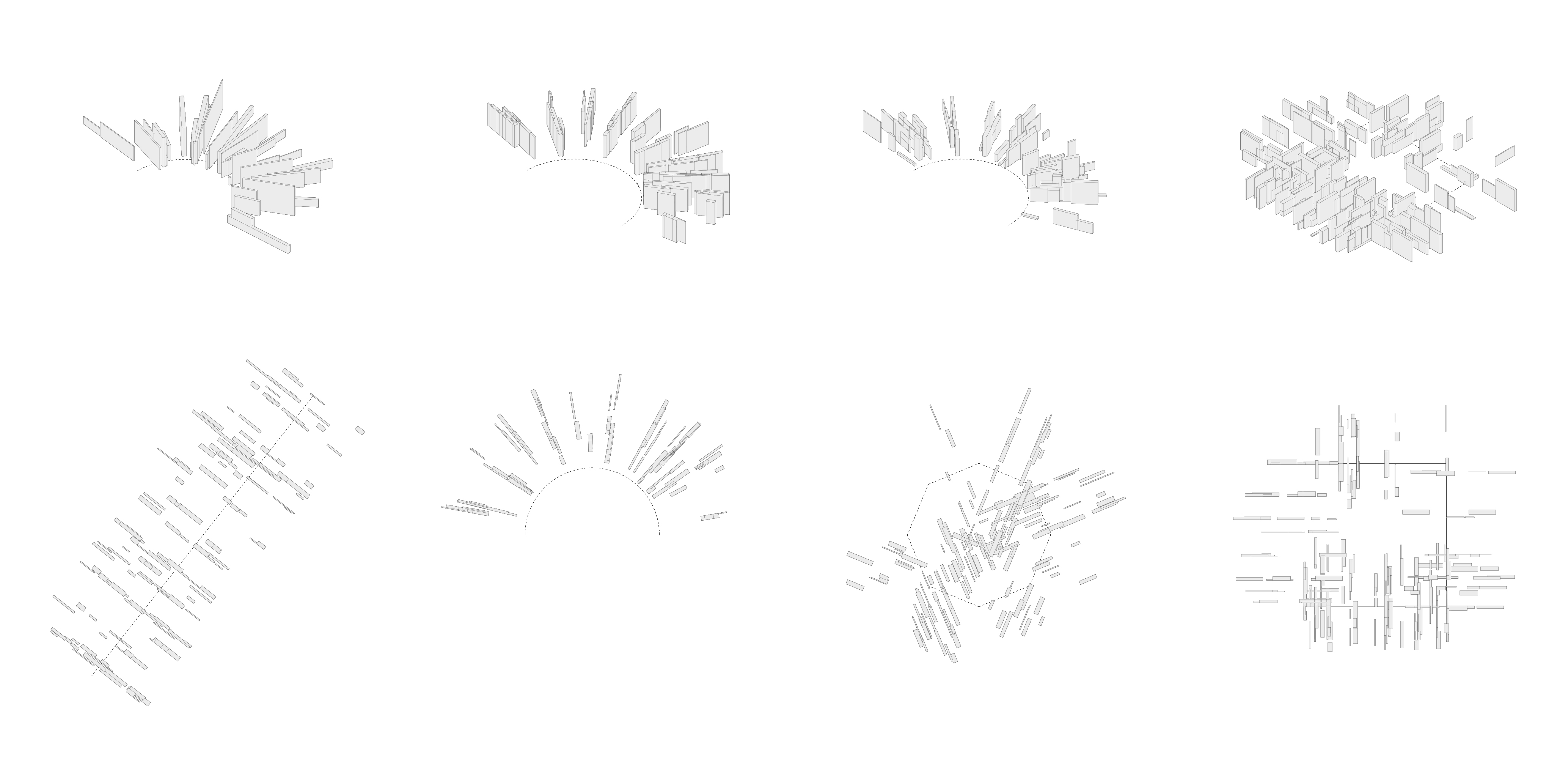
Lastly I created an example of how I could integrate this configuration into the site. I plan to explore how the code could be used to map walls onto topography lines, key geometry or paths within the site to create a series of spaces which are linked to the outside.
